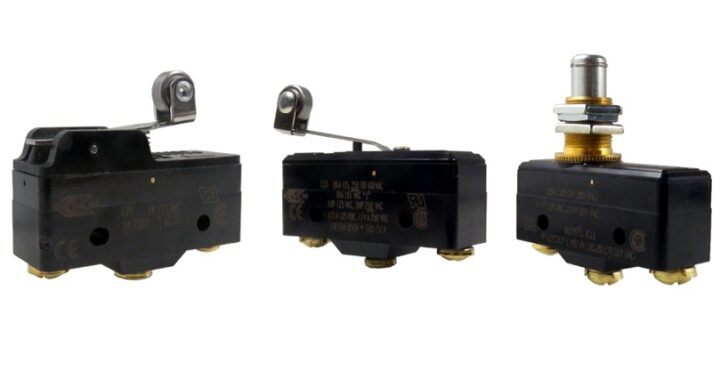Safety Relay vs Normal Relay: All Differences Explained!

When it comes to safety in industrial settings, selecting the right relay can make all the difference. Safety relays and normal relays may look similar, but their functions and features differ greatly. Understanding the differences between safety relays and normal relays is crucial for ensuring the safety of both workers and equipment. In this article, we will explore the key differences between safety relays and normal relays, and explain how to choose the right relay for your specific safety application.
Differences Between Safety Relay and Normal Relay
Differences between a safety relay and a normal relay are:
1. Contact types
Unlike other relays, the safety relay has the function to detect its welding state and allows determination by the control circuit if contacts are welded together because it has guided contacts. This type of contact is mechanically connected. If a normally open (NO) or make contact remains closed, a normally closed (NC) or break contact cannot reclose. Additionally, if a normally closed (NC) contact fails to open upon energizing the relay, the NO contacts shall not close.
Normal relay has only mechanical contacts for switching.

2. Dimension
The dimension of a safety relay is bigger than a normal relay. A safety relay is the product of advanced technology. It has many complicated circuits inside its construction.
A mechanical relay has a simple circuit. That’s why it is compact.
3. Function
The safety relay has various switching, protection, and indication functions. For example, the safety relay protects people. It controls a user’s action to ensure that this does not lead to anything that may damage his health, either voluntarily or accidentally. Besides, when a machine may be dangerous for the user, it monitors all hazardous operations and detects the slightest anomaly. Normal relay is generally used for just switching in control circuits.

4. Color
A normal relay is produced in different colors. (Mostly white) You can easily recognize a safety relay from its yellow color.
Normal relays can come in a variety of colors depending on the manufacturer and application. While white is a common color for standard relays, other colors such as black, red, green and blue can also be used.
The yellow color used for some safety relays is intended to provide a visual indication that the relay is intended for safety applications. This can be helpful for operators and technicians who need to quickly identify which relays are safety critical and which are not.
5. Usage
A safety relay is used for the combination of switches. Normal relay is used for the linkage of contacts.
Safety relays are often used in combination with switches to ensure that the switches are functioning properly and that the system is safe. For example, a safety relay might be used to monitor the position of a guard switch on a machine. If the guard switch is opened, the safety relay will detect this and stop the machine to prevent injury.
On the other hand, a normal relay is used for the linkage of contacts in various applications such as control systems, power systems and automation. It is used to switch electrical circuits on and off or to connect and disconnect different parts of a circuit. Normal relays are typically not designed to provide the same level of safety as safety relays and are used in applications where safety is not a critical concern.
6. Cost
The cost of safety relay is much more expensive than a normal relay. (Up to 15 times)

7. Application
Safety relays are excellent for usage in safety applications. The most common applications for safety relays are e-stop circuits, safety gates, two-hand control, light curtains, safety mats, foot-operated switches, and interlocked gates.
But a normal relay can be used in almost any automation application. That is why the market size of a normal relay is huge.
8. Contact welding
In a safety relay application, the contacts are designed to operate in such a way that when a fault is detected, they will immediately open or “trip” to stop the machine. This is because the safety of the machine and its operators is the primary concern in this type of application.
If the contacts of a safety relay are welded, it means that they have become stuck together and are not able to open. This is a serious problem because it means that the relay is unable to perform its intended function of stopping the machine in the event of a fault. In this situation, the machine should be stopped immediately using other means such as an emergency stop button.
In a normal relay application, the relay is typically used for controlling the operation of a machine or other equipment. If the contacts of a normal relay are welded, it means that the relay is unable to switch off the power to the machine even if it is commanded to do so. In this case, the machine will continue running until someone manually presses the emergency stop button or takes other action to shut it down.
In conclusion, selecting the right relay is a critical aspect of ensuring safety in industrial settings. While safety relays and normal relays may look similar, their functions and features differ greatly. Safety relays are designed specifically for safety applications and are capable of detecting faults and opening contacts to stop a machine in case of an emergency. They are larger, more complex, and significantly more expensive than normal relays. On the other hand, normal relays are used for controlling the operation of machines and are not designed to provide the same level of safety as safety relays. By understanding the differences between safety relays and normal relays, you can select the right relay for your specific safety application and help ensure the safety of both workers and equipment.

 Types of Timer Relays and Their Applications
Types of Timer Relays and Their Applications  Relay Applications: Real-Life And Industrial Examples
Relay Applications: Real-Life And Industrial Examples  Types of Micro Switches and Their Applications
Types of Micro Switches and Their Applications  Best Voltage Testers for Home Use: 2023 Edition
Best Voltage Testers for Home Use: 2023 Edition  Advantages of Transducers for Optimal Measurement
Advantages of Transducers for Optimal Measurement  Advantages of Infrared Sensors: Improved Accuracy and More
Advantages of Infrared Sensors: Improved Accuracy and More